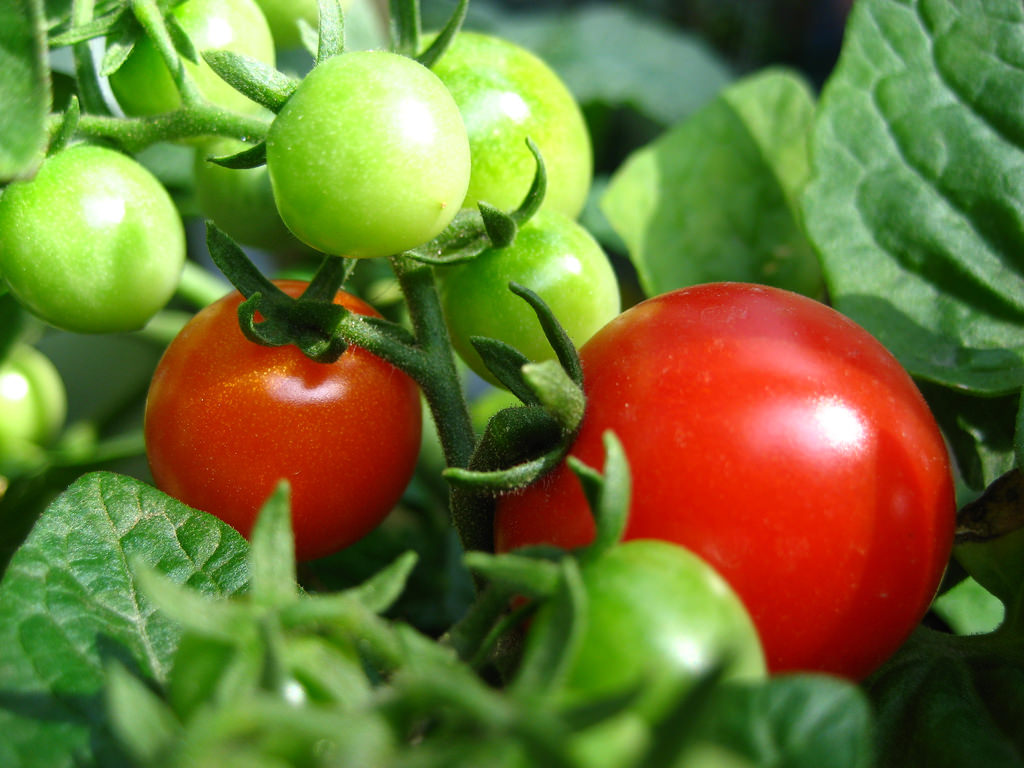We’re a long ways away from colonizing another planet—depending on who you talk to—but it’s not too soon to start understanding how we might do it when the time comes. Growing enough food will be one of the primary concerns for any future settlers of Mars. With that in mind, researchers at the Wageningen University and Research Centre in the Netherlands have created simulated Martian soil and used it to grow food crops.
This is actually the second experiment the team has performed with simulated soil, and the results were promising. The team harvested not only tomatoes and peas, but also rye, garden rocket, radish, and watercress. But it’s not just the edibles that were promising, it was the overall ability of the simulated soil to produce biomass in general. According to the researchers, the soil produced biomass equal to that produced by Earth soil, which was used as a control.
The team also grew crops in simulated Moon soil, to understand how that soil performed, but it produced much less biomass, and only the humble spinach was able to grow in it. The simulated Martian and Lunar soils were provided by NASA. The Martian soil came from a Hawaiian volcano, and the Lunar soil came from a desert in Arizona.
The soil used was not exactly the same as the soil you would scoop up if you were on the Moon or Mars. It was amended with organic matter in the form of manure and fresh cut grass. While this may sound like a ‘cheat’, it’s no different than how gardens are grown on Earth, with gardeners using manure, compost, grass clippings, leaves, and even seaweed to provide organic matter.
Of course, none of these soil amendments will be available on the Moon or Mars, and we won’t be sending a supply ship full of manure. Colonists will have to make use of all of the inedible parts of their crops—and human feces—to provide the organic material necessary for plant growth. It’ll be a closed system, after all.
The crops were grown in a controlled environment, where temperature, humidity, and other factors were kept within Earthly parameters. Any crops grown on Mars will be grown in the same controlled environments, at least until genetic modification can create plants able to withstand the increased radiation and other factors.
A problem facing colonists trying to grow food on Mars is the heavy metal content of the soil. Mars soil contains mercury, lead, cadmium, and arsenic, which are all toxic to humans. The presence of these elements doesn’t bother the plants; they just keep growing. But any crops grown in this soil will have to be tested for toxicity before they can be consumed. This is the next experiment that the team has planned.
Researchers at the Wageningen University are currently crowdfunding for this next experiment. If you’d like to contribute, check out their page here.


From the linked page: “Plants are not too bothered by these and just carry on growing.” As such, it would seem to me (not a farmer) like a bigger obstacle to growing in Martian soil would be the presence of naturally occurring peroxides/perchlorates, rather than the metals. Those oxidizers can kill plants better than Round-Up(TM) any day, from what I understand?
It’s likely that a lot of the really nasty stuff will be unstable if you take it out of the Martian environment and into a warm, oxygen-rich atmosphere. Others are water-soluble and could just be washed off. Some perchlorates can actually be metabolized by certain microbes. So these toxic chemicals are a problem, but I think there will be ways of dealing with them.
Fair points. So maybe, heat up what one is planning to use for “potting soil,” drive off the volatiles, then let it cool down and let irrigation and natural processes take care of what’s left? Again, not a farmer, but I can see how that might work.
Simulating Martian soil is too of a long shot IMO, if one is to grow something on Mars he will clearly try more of the soils found there, and chose the one that will make the plants grow most. The real thing that we could try here, but noone thought about it, is to see what plants can grow in a Martian like atmosphere, reach in CO2, which is by the way, the gas that plants needs most. This way all it could be needed there is to compress that Martian air untill the pressure is close to what plants need to thrive .
Hydroponics will be key at first? There IS a lot of water in the form of ice there. Melt, filter and purify that then add compost and waste fermented into a liquid fertilizer. Got chickens on the crew?
Tell you what.. there is a black soil called Terra preta from the Amazon that miraculously revitalizes any depleted soils. Whatever is in it is self replicating and spreads where it is used. This black soil is everywhere in the Amazon basin. It was created by ancient peoples who once thrived there. Modern scientists are flummoxed trying to explain this soil’s incredible restorative properties. Try that?